Kingdom Animalia | ||
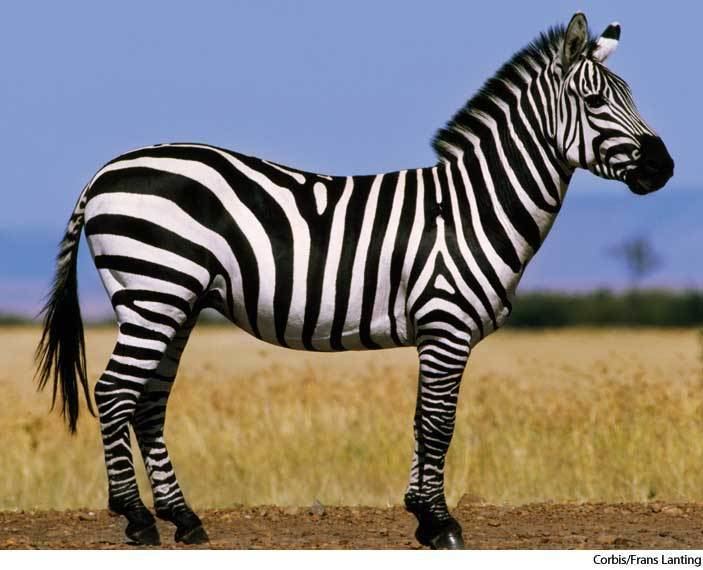 | ||
Representative species plains zebra, mountain zebra, Grévy's zebra Similar Plains zebra , Mountain zebra , Grévy's zebra | ||
Zebra animals for children kids videos kindergarten preschool learning
Zebras (/ˈzɛbrə/ ZEB-rə or /ˈziːbrə/ ZEE-brə) are several species of African equids (Horse family) united by their distinctive black and white striped coats. Their stripes come in different patterns, unique to each individual. They are generally social animals that live in small harems to large herds. Unlike their closest relatives, horses and donkeys, zebras have never been truly domesticated.
Contents
- Zebra animals for children kids videos kindergarten preschool learning
- Facts
- Zebras for kids learn all about zebras freeschool
- Etymology
- Taxonomy and evolution
- Classification
- Size and weight
- Stripes
- Gaits
- Senses
- Diseases
- Harems
- Communication
- Food and foraging
- Reproduction
- Domestication
- Conservation
- Cultural depictions
- Biofuel
- References
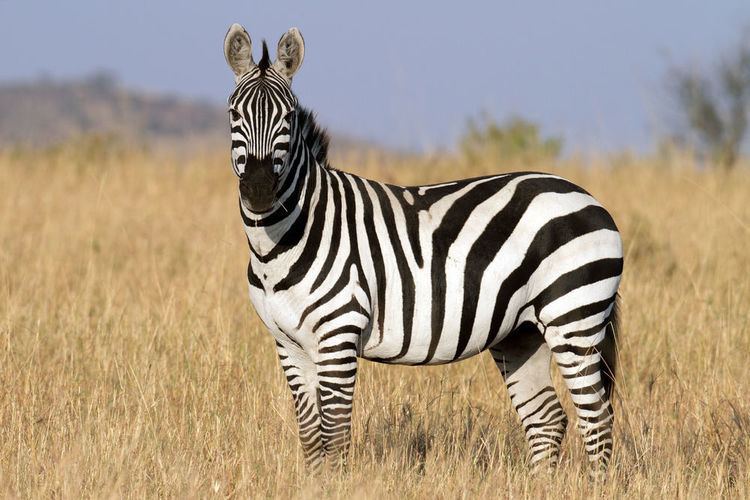
There are three species of zebras: the plains zebra, the Grévy's zebra and the mountain zebra. The plains zebra and the mountain zebra belong to the subgenus Hippotigris, but Grévy's zebra is the sole species of subgenus Dolichohippus. The latter resembles an ass, to which it is closely related, while the former two are more horse-like. All three belong to the genus Equus, along with other living equids.
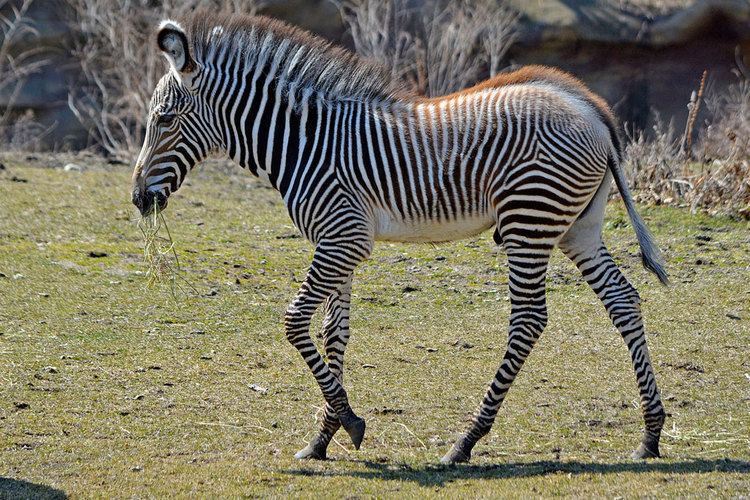
The unique stripes of zebras make them one of the animals most familiar to people. They occur in a variety of habitats, such as grasslands, savannas, woodlands, thorny scrublands, mountains, and coastal hills. However, various anthropogenic factors have had a severe impact on zebra populations, in particular hunting for skins and habitat destruction. Grévy's zebra and the mountain zebra are endangered. While plains zebras are much more plentiful, one subspecies, the quagga, became extinct in the late 19th century – though there is currently a plan, called the quagga Project, that aims to breed zebras that are phenotypically similar to the quagga in a process called breeding back.
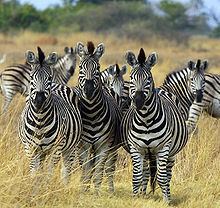
Facts
Zebras for kids learn all about zebras freeschool
Etymology
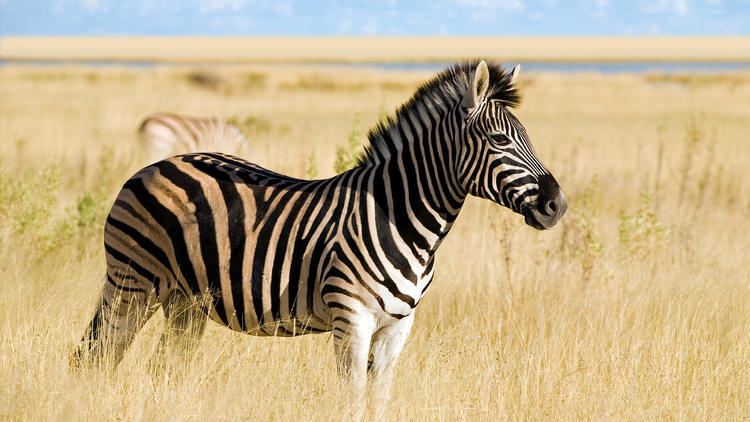
The name "zebra" in English dates back to c. 1600, from Italian zebra, perhaps from Portuguese, which in turn is said to be Congolese (as stated in the Oxford English Dictionary). The Encarta Dictionary says its ultimate origin is uncertain, but perhaps it may come from Latin equiferus meaning "wild horse"; from equus ("horse") and ferus ("wild, untamed"). The word was traditionally pronounced with a long initial vowel, but over the course of the 20th century, the pronunciation with the short initial vowel became the usual one in the UK and Commonwealth. The pronunciation with a long initial vowel remains standard in the United States.
Taxonomy and evolution
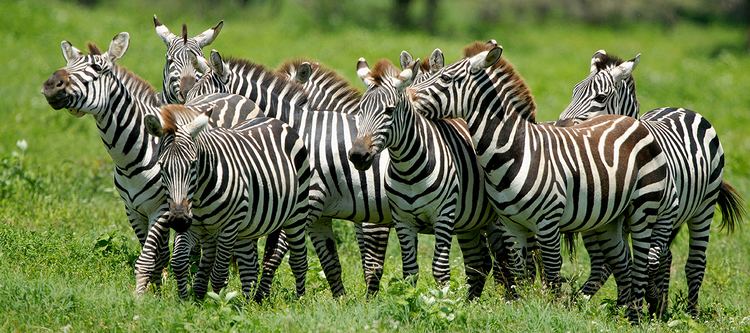
Zebras evolved among the Old World horses within the last 4 million years. It has been suggested that zebras are polyphyletic and that striped equids evolved more than once. Extensive stripes are posited to have been of little use to equids that live in low densities in deserts (like asses and some horses) or ones that live in colder climates with shaggy coats and annual shading (like some horses). However, molecular evidence supports zebras as a monophyletic lineage.
Classification
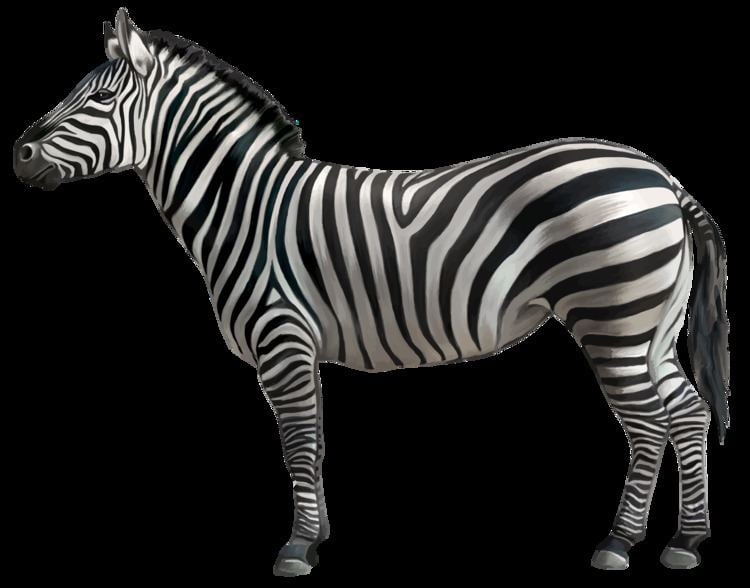
There are three extant species. Collectively, two of the species have eight subspecies (seven extant). Zebra populations are diverse, and the relationships between, and the taxonomic status of, several of the subspecies are not well known.
The plains zebra (Equus quagga, formerly Equus burchelli) is the most common, and has or had about six subspecies distributed across much of southern and eastern Africa. It, or particular subspecies of it, have also been known as the common zebra, the dauw, Burchell's zebra (actually the subspecies Equus quagga burchellii), Chapman's zebra, Wahlberg's zebra, Selous' zebra, Grant's zebra, Boehm's zebra and the quagga (another extinct subspecies, Equus quagga quagga).
The mountain zebra (Equus zebra) of southwest Africa tends to have a sleek coat with a white belly and narrower stripes than the plains zebra. It has two subspecies and is classified as vulnerable.
Grévy's zebra (Equus grevyi) is the largest type, with a long, narrow head, making it appear rather mule-like. It is an inhabitant of the semi-arid grasslands of Ethiopia and northern Kenya. Grévy's zebra is the rarest species, and is classified as endangered.
Although zebra species may have overlapping ranges, they do not interbreed. In captivity, plains zebras have been crossed with mountain zebras. The hybrid foals lacked a dewlap and resembled the plains zebra apart from their larger ears and their hindquarters pattern. Attempts to breed a Grévy's zebra stallion to mountain zebra mares resulted in a high rate of miscarriage. In captivity, crosses between zebras and other (non-zebra) equines have produced several distinct hybrids, including the zebroid, zeedonk, zony, and zorse. In certain regions of Kenya, plains zebras and Grévy's zebra coexist, and fertile hybrids occur.
Size and weight
The common plains zebra is about 1.2–1.3 m (47–51 in) at the shoulder with a body ranging from 2–2.6 m (6.6–8.5 ft) long with a 0.5 m (20 in) tail. It can weigh up to 350 kg (770 lb), males being slightly bigger than females. Grévy's zebra is considerably larger, while the mountain zebra is somewhat smaller.
Stripes
It was previously believed that zebras were white animals with black stripes, since some zebras have white underbellies. Embryological evidence, however, shows that the animal's background color is black and the white stripes and bellies are additions. It is likely that the stripes are caused by a combination of factors.
The stripes are typically vertical on the head, neck, forequarters, and main body, with horizontal stripes at the rear and on the legs of the animal.
A wide variety of hypotheses have been proposed to account for the evolution of the striking stripes of zebras. The more traditional of these (1 and 2, below) relate to camouflage.
1. The vertical striping may help the zebra hide in the grass by disrupting its outline. In addition, even at moderate distances, the striking striping merges to an apparent grey. However, the camouflage has been contested with arguments that most of a zebra's predators (such as lions and hyenas) cannot see well at a distance, and are more likely to have smelled or heard a zebra before seeing it from a distance, especially at night.
2. The stripes may help to confuse predators by motion dazzle—a group of zebras standing or moving close together may appear as one large mass of flickering stripes, making it more difficult for the lion to pick out a target. It has been suggested that when moving, the stripes may confuse observers, such as mammalian predators and biting insects, by two visual illusions: the wagon-wheel effect, where the perceived motion is inverted, and the barberpole illusion, where the perceived motion is in a wrong direction.
3. The stripes may serve as visual cues and identification. Although the striping pattern is unique to each individual, it is not known whether zebras can recognize one another by their stripes.
4. Experiments by different researchers indicate that the stripes are effective in attracting fewer flies, including blood-sucking tsetse flies and tabanid horseflies. A 2012 experiment in Hungary showed that zebra-striped models were nearly minimally attractive to tabanid horseflies. These flies are attracted to linearly polarized light, and the study showed that black and white stripes disrupt the attractive pattern. Further, attractiveness increases with stripe width, so the relatively narrow stripes of the three living species of zebras should be unattractive to horseflies.
5. Stripes may be used to cool the zebra. Air may move more quickly over black light-absorbing stripes while moving more slowly over white stripes. This would create convection currents around the zebra that would cool it. One study analyzes that zebras have more stripes in hotter habitats.
Gaits
Zebras have four gaits: walk, trot, canter and gallop. They are generally slower than horses, but their great stamina helps them outrun predators. When chased, a zebra will zig-zag from side to side, making it more difficult for the predator to attack. When cornered, the zebra will rear up and kick or bite its attacker.
Senses
Zebras have excellent eyesight. It is believed that they can see in color. Like most ungulates, the zebra's eyes are on the sides of its head, giving it a wide field of view. Zebras also have night vision, although not as advanced as that of most of their predators.
Zebras have excellent hearing and have larger, rounder ears than horses; like other ungulates, zebras can turn their ears in almost any direction. In addition to superb eyesight and hearing, zebras also have acute senses of smell and taste.
Diseases
Being an equid, zebras are subject to many of the same common infections and diseases of the domestic horse.
Two Grévy's zebras were poisoned in 1995 by leaves from a hybrid red maple tree (acer rubrum) at the St. Louis Zoo. Horses were first reported in 1981 to be susceptible and even a small amount of the leaves can be toxic to ponies. In 2000, a zebra was reported to be infected with a nematode, halicephalobus, usually associated with decaying plant material.
Harems
Like most members of the horse family, zebras are highly social. Their social structure, however, depends on the species. Mountain zebras and plains zebras live in groups, known as 'harems', consisting of one stallion with up to six mares and their foals. Bachelor males either live alone or with groups of other bachelors until they are old enough to challenge a breeding stallion. When attacked by packs of hyenas or wild dogs a zebra group will huddle together with the foals in the middle while the stallion tries to ward them off.
Unlike the other zebra species, Grévy's zebras do not have permanent social bonds. A group of these zebras rarely stays together for more than a few months. The foals stay with their mothers, while adult males live alone. Like the other two zebra species, bachelor male zebras will organize in groups.
Like horses, zebras sleep standing up, and only sleep when neighbors are around to warn them of predators.
Communication
Zebras communicate with each other with high-pitched barks and whinnying. Grévy's zebras make mulelike brays. A zebra's ears signify its mood. When a zebra is in a calm, tense or friendly mood, its ears stand erect. When it is frightened, its ears are pushed forward. When angry, the ears are pulled backward. When surveying an area for predators, zebras will stand in an alert posture with ears erect, head held high, and staring. When tense, they will also snort. When a predator is spotted or sensed, a zebra will bark (or bray) loudly.
Food and foraging
Zebras feed almost entirely on grasses, but may occasionally eat shrubs, herbs, twigs, leaves and bark. Their digestive systems allow them to subsist on diets of lower nutritional quality than that necessary for other herbivores.
Reproduction
Female zebras mature earlier than the males, and a mare may have her first foal by the age of three. Males are not able to breed until the age of five or six. Mares may give birth to one foal every twelve months. She nurses the foal for up to a year. Like horses, zebras are able to stand, walk and suckle shortly after they are born. A zebra foal is brown and white instead of black and white at birth.
Plains and mountain zebra foals are protected by their mothers, as well as the head stallion and the other mares in their group. Grévy's zebra foals have only their mother as a regular protector, since, as noted above, Grévy's zebra groups often disband after a few months.
Domestication
Attempts have been made to train zebras for riding, since they have better resistance than horses to African diseases. Most of these attempts failed, as would have initial attempts to tame wild horses, due to the zebra's more unpredictable nature and tendency to panic under stress. For this reason, zebra-mules or zebroids (crosses between any species of zebra and a horse, pony, donkey or ass) are preferred over purebred zebras.
In England, the zoological collector Walter Rothschild frequently used zebras to draw a carriage. In 1907, Rosendo Ribeiro, the first doctor in Nairobi, Kenya, used a riding zebra for house calls. In the mid-19th century, Governor George Grey imported zebras to New Zealand from his previous posting in South Africa, and used them to pull his carriage on his privately owned Kawau Island.
Captain Horace Hayes, in "Points of the Horse" (circa 1893), compared the usefulness of different zebra species. In 1891, Hayes broke a mature, intact mountain zebra stallion to ride in two days time, and the animal was quiet enough for his wife to ride and be photographed upon. He found the Burchell's zebra easy to break, and considered it ideal for domestication, as it was immune to the bite of the tsetse fly. He considered the quagga (now extinct) well-suited to domestication due to being easy to train to saddle and harness.
Conservation
Modern man has had great impact on the zebra population. Zebras were, and still are, hunted for their skins, and for meat. They also compete with livestock for forage and are sometimes culled.
The Cape mountain zebra was hunted to near extinction, with less than 100 individuals by the 1930s. The population has since increased to about 700 due to conservation efforts. Both mountain zebra subspecies are currently protected in national parks, but are still endangered.
The Grévy's zebra is also endangered. Hunting and competition from livestock have greatly decreased their population. Because of the population's small size, environmental hazards, such as drought, are capable of affecting the entire species. Plains zebras are much more numerous and have a healthy population. Nevertheless, they too have been reduced by hunting and loss of habitat to farming. One subspecies, the quagga, is now extinct.
Cultural depictions
Zebras have been the subject of African folk tales which tell how they got their stripes. According to a San folk tale of Namibia, the zebra was once all white, but acquired its black stripes after a fight with a baboon over a waterhole. After kicking the baboon so hard, the zebra lost his balance and tripped over a fire, and the fire sticks left scorch marks all over his white coat. In the film Fantasia, two centaurs are depicted being half human and half zebra, instead of the typical half human and half horse.
Zebras are a popular subject in art. The fourth Mughal emperor Jahangir (r.1605–24), commissioned a painting of the zebra, which was completed by Ustad Mansur. Zebra stripes are also a popular style for furniture, carpets and fashion.
When depicted in movies and cartoons, zebras are most often miscellaneous characters, but have had some starring roles, notably in Madagascar, Racing Stripes and Khumba. One of the recurring characters in My Little Pony: Friendship is Magic is a zebra named Zecora. Zebras also serve as mascots and symbols for products and corporations, notably Zebra Technologies and Fruit Stripe gum as well as Investec. Zebras are featured on the coat of arms of Botswana.
Biofuel
Recent research has shown that TU-103, a strain of Clostridium bacteria found in zebra feces, can convert nearly any form of cellulose into butanol fuel.
